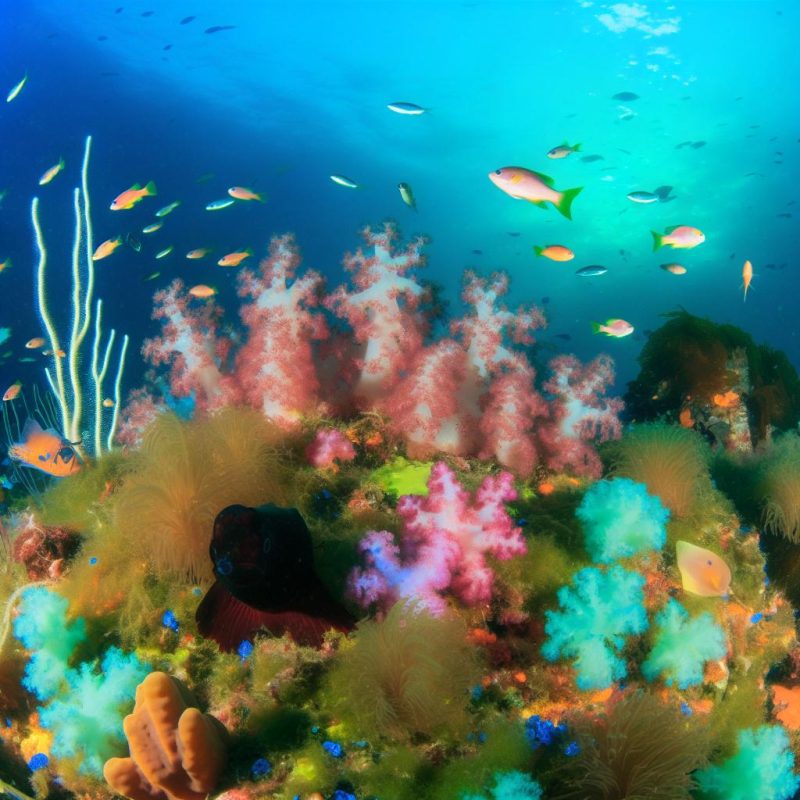Introduction to Marine Life in Argyll
The waters surrounding Argyll, located in the western part of Scotland, are home to a rich diversity of marine life. This region boasts a variety of habitats, from rocky shores and sandy beaches to seagrass beds and kelp forests. These diverse ecosystems provide a sanctuary for numerous species of fish, marine mammals, and seabirds.
Fish Species in Argyll Waters
Argyll’s coastal waters support an array of fish, including some that are economically important to the local fishing industry. Among the most commonly found are the Atlantic mackerel and herring, both of which are critical to the marine food chain. Additionally, the Atlantic cod (Gadus morhua) and haddock (Melanogrammus aeglefinus) are prevalent species.
Kelp Forests and Their Inhabitants
Kelp forests are abundant in Argyll’s waters and serve as vital habitats for various marine organisms. These underwater forests are dominated by large brown seaweeds known as kelp, providing shelter and food for fish species such as the wrasse and pollock. Many invertebrates, including sea urchins and crabs, also thrive in these ecosystems.
Kelp forests play an essential role in the marine environment by offering not only refuge but also a stable food source to numerous marine creatures. The complex structure of these underwater forests allows different species to inhabit various niches, promoting high biodiversity. Additionally, kelp forests help in carbon sequestration, thus playing a critical part in global carbon cycles by absorbing carbon dioxide from the atmosphere.
Furthermore, kelp forests offer ecological benefits that help stabilize the underwater habitat. They reduce coastal erosion by dampening the force of waves and providing a buffer against coastal storms. This direct effect on coastal morphology underscores the importance of kelp forests as both a biological and geological component of the marine ecosystem.
Marine Mammals Found in Argyll
Argyll’s coastal waters are frequented by several species of marine mammals. Notably, the harbour porpoise (Phocoena phocoena) is often observed in the region, recognized by its small size and shy nature. Additionally, the bottlenose dolphin (Tursiops truncatus) is known for its intelligence and acrobatics, commonly seen off the coast. The area also provides a seasonal home to the majestic humpback whale and minke whale, particularly during feeding times.
The presence of these marine mammals is indicative of the healthy state of Argyll’s marine environment. These mammals require a thriving food web, ample prey, and a safe habitat to flourish. They are also important indicators of marine health since they are often at the top of the food chain. Exploring Argyll through marine tours often yields sightings of these majestic creatures, offering enthusiasts a unique experience.
Efforts to protect these mammals have become significant, given their role in both the ecosystem and the local economy through ecotourism. Conservation measures aim to mitigate threats such as bycatch, pollution, and habitat destruction, ensuring these species continue to thrive in the waters around Argyll.
Seabirds and the Coastal Environment
The coastline of Argyll supports diverse bird life, especially seabirds that nest and feed in this region. Puffins, known for their colorful beaks and social nature, are a significant attraction. Meanwhile, gannet colonies can be seen diving dramatically into the sea to catch fish. The rocky cliffs and islands provide nesting sites for guillemots and razorbills.
Seabirds play an integral part in the coastal ecosystem and are essential for maintaining the ecological balance within these environments. They help control fish populations, clean up dead animals and can affect the nutrient cycle through their guano contributions, which fertilize terrestrial ecosystems. The protection of seabird colonies also has broader environmental benefits, supporting the overall health of marine and adjacent terrestrial ecosystems.
The sound management of Argyll’s coastal environments, including the designation of protected areas and strict regulation of fishing activities, helps ensure the continued prosperity of these seabirds. Monitoring efforts often involve both local authorities and conservation organizations, emphasizing a collaborative approach to environmental preservation.
To learn more about marine conservation in the area, you can visit the official site of the Argyll and Bute Council. Their efforts help protect the fragile ecosystems and ensure the sustainability of marine life in the region.
Beyond the ecological and economic significance, Argyll’s marine areas serve as important sites for scientific research. The study of adaptation strategies, species interactions, and the impacts of climate change on marine biodiversity are critical components of ongoing research in the area. Such scientific endeavors help in developing comprehensive conservation strategies to protect these integral ecosystems for future generations.
In conclusion, Argyll represents a microcosm of the rich marine biodiversity that characterizes many coastal regions in Scotland. Its wide range of habitats supports an array of species that contribute to the area’s natural beauty and ecological health. The ongoing efforts in conservation and sustainable management ensure that these ecosystems continue to flourish, thereby maintaining their vital role in the broader environmental context.

